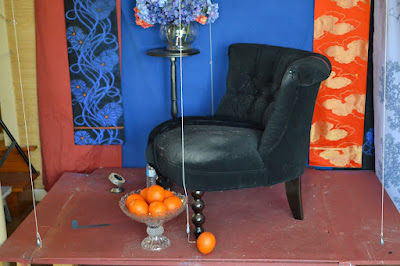11. Shape Basics - Seeing & Measuring Accurate Proportions
Every shape has character - it shapes your opinion of the subject, object, whatever. We judge things on how they look. That cat is cute. That salad is bright and colorful. That old car looks like it's about to break down. You can play with shapes to change how they seem and feel to the viewer - I talk about this in my Principles of Composition - Shape lesson. But first, you have to know what you're seeing. When learning about shapes, there are two aspects to focus on: accuracy and design.
In this lesson we will focus on accuracy, as we draw simple objects with bold, pronounced shapes. In art, there is as much to unlearn as there is to learn, and one of the great struggles is really seeing shapes as they are. We have so many preconceived notions of reality - we think we know how an eye looks or a car, or a house. This knowledge becomes a barrier, blocking us from seeing the differences right in front of us. Measuring accurate proportions usually follows three stages:
Beginner: You draw what you think you see (but, you're wrong).
Intermediate: You draw what you really see - being able to measure proportions as abstract shapes.
Advanced: You draw what you want, using some of what you see, while inventing something better.
This lesson is meant to push beginners towards that intermediate level, so I will pair objects that are taller, shorter, slimmer, wider, symmetrical, asymmetrical, etc. It's your job to see exactly how much taller, shorter, and so on these objects are, as you begin using your eyes as a ruler. This will be more intuitive for some students, while others will really struggle. And, that is okay. Give it time and practice and you will improve. ;)
1ST COMMON MISTAKE: Your subject slowly gets bigger or smaller as you go (I have done this).
2ND COMMON MISTAKE: You start too big and your subject goes off the page (I did this too).
3RD COMMON MISTAKE: You start too small in the middle of the page, and end up with lots of empty space (I'm also guilty).
We all make these mistakes - and they can recur even after many years of practice, if we're not careful. And that's okay. No one gets hurt by this, you just try again and make it better.
TO AVOID THESE MISTAKES: AVOID TUNNEL VISION! Step back from your work every couple of minutes, and consider if your measurements are off - and how to fix them. Do you make one area larger? Or another smaller? It's easier to make these changes when your shapes are simple and unshaded - hold off details and shading here until later.
PRO TIP 1: You can improve your accuracy by breaking the subject down into units - cutting it in half, or into quarters, or, in figure drawing, using the length of the head as a unit. As long as your drawing has those same proportions, it should be accurate. Beware, that not everyone has the same number of head units. Bodies come in all shapes and sizes.
PRO TIP 2: You can also draw "plumb lines" which are straight, vertical lines, to help see what shapes align along those verticals.
PRO TIP 3: If you take a photo of your work, you can compare it to a photo reference in Photoshop, and see your mistakes. Both Prokopenko and I have been doing this for years.
ASSIGNMENT LEVEL 1 - Shape Worksheet
ASSIGNMENT LEVEL 2 - Draw a Grid
ASSIGNMENT LEVEL 2 - Drawing Blocks
THE SET UP: a pencil and a blank piece of paper.
ASSIGNMENT LEVEL 3 - Upside Down Sketching



Comments
Post a Comment